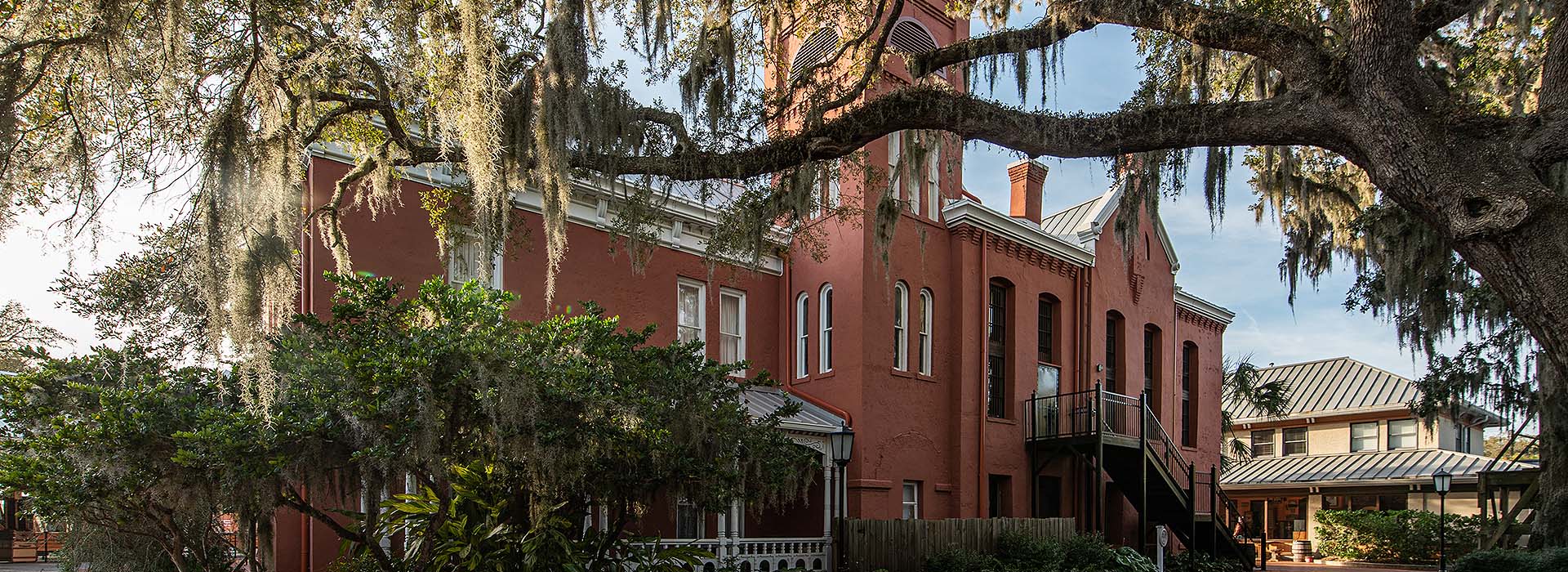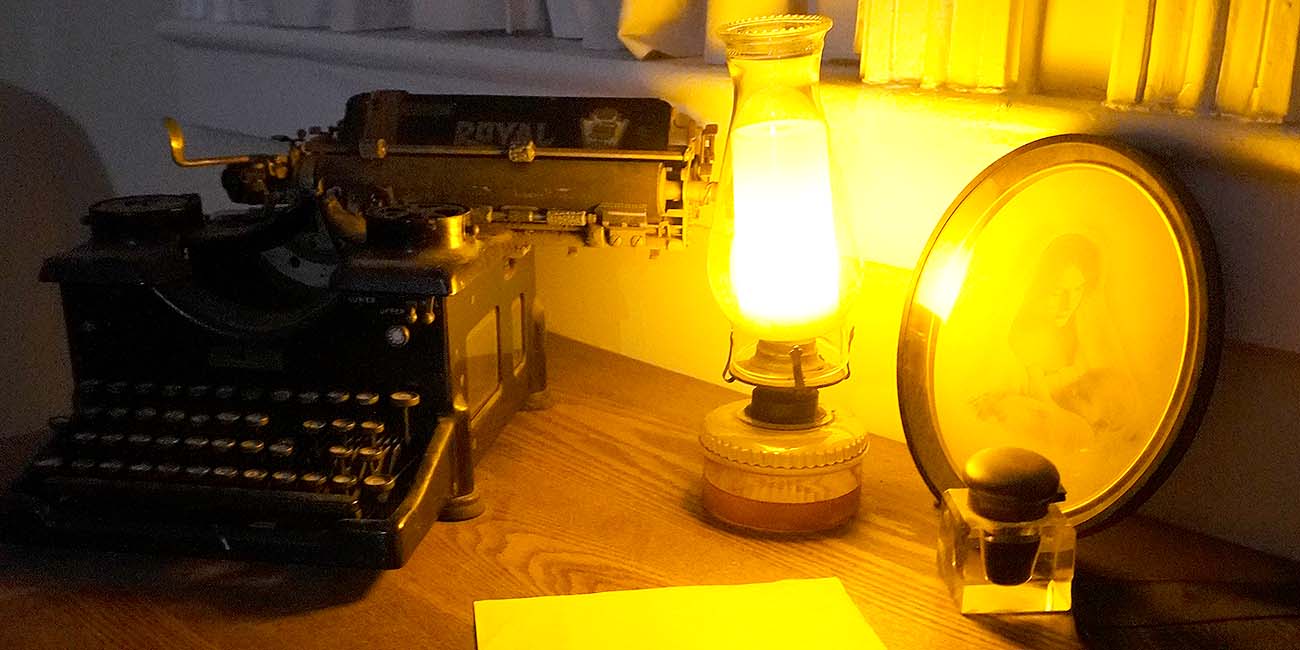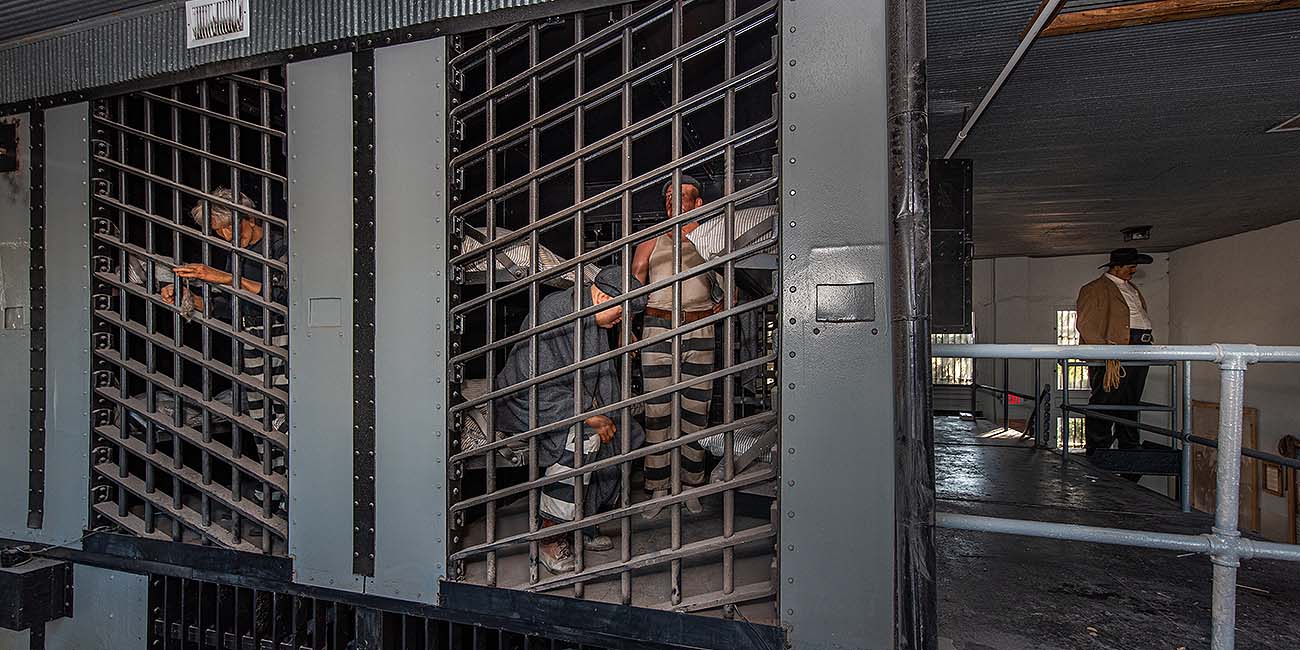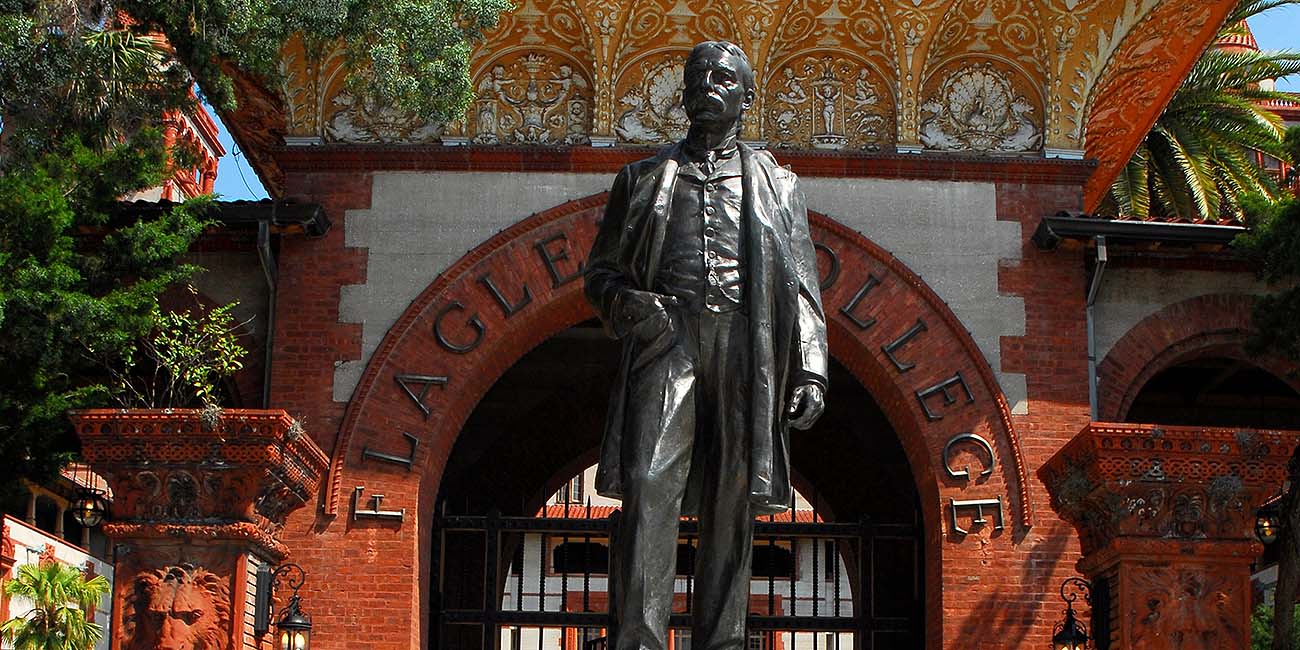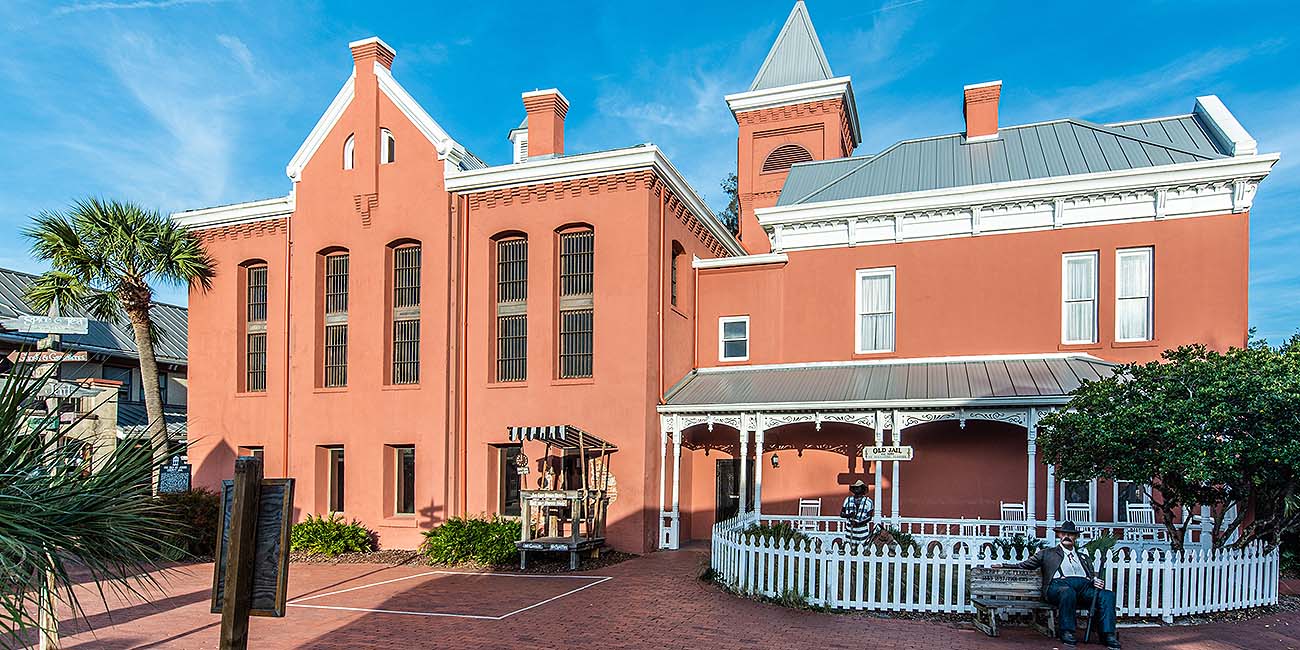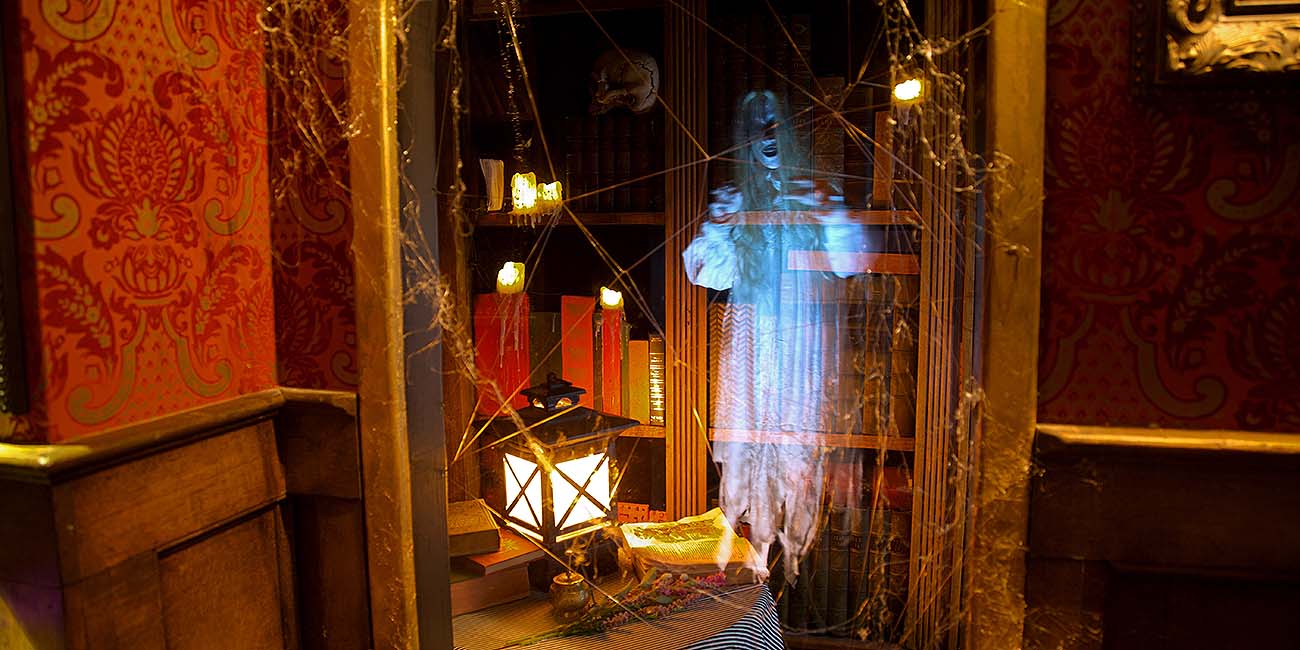The Old Jail's Past


The Old Jail has stood in St. Augustine since 1891. It served as the city’s primary correctional facility for over 60 years. Located just outside the main tourist district, the Old St. Johns County Jail was designed to keep inmates out of sight while maintaining strict security for criminals, debtors, and the mentally ill. At full capacity, it held up to 72 prisoners and included a maximum-security section for the most violent offenders.
The facility remained in operation until 1953 when it was decommissioned. Although it no longer holds prisoners, the Old Jail’s history remains an important part of St. Augustine’s past. The structure is well-preserved, allowing visitors to explore original cell blocks, security stations, and prisoner living conditions.
A Unique Approach to Jail Design
The Old St. Johns County Jail was constructed by the Pauly Jail Company, a firm known for its advanced security designs. The company built several high-profile prisons, including Alcatraz. They were known for designing rotary jails, which featured rotating cells to prevent escape attempts. While the Old Jail did not use a rotary design, it included multiple security features to keep prisoners locked away.
A central guard station allowed law enforcement to observe all activity inside the jail, reducing the risk of riots or escape attempts.
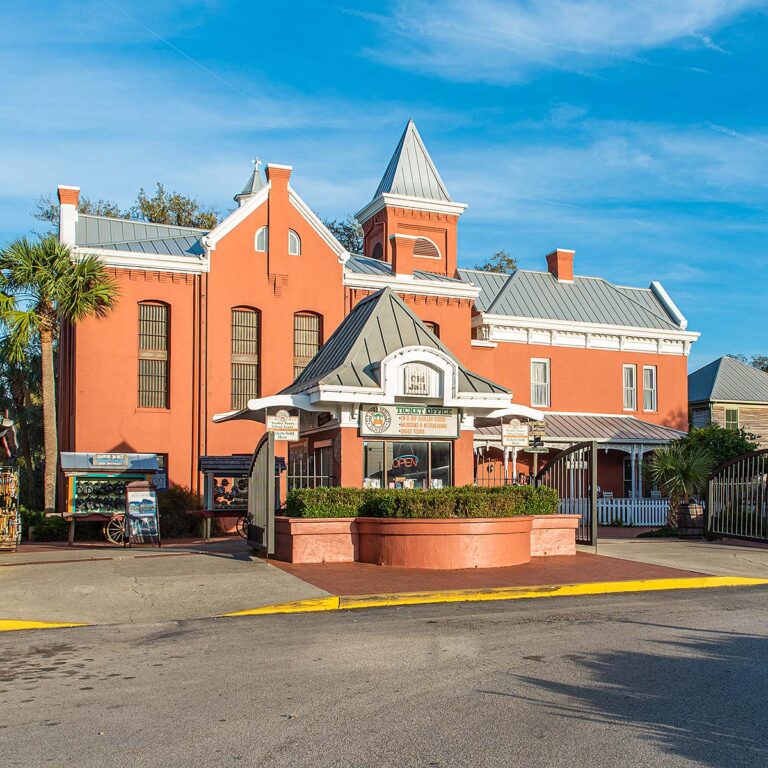
The structure itself was made from reinforced red brick and granite, which provided both security and durability. Unlike most jails of the time, the building featured decorative architectural elements, including Romanesque Revival details, arched windows, and Eastlake-style porches.
Construction and Materials

The Pauly Jail Company used materials sourced from Georgia, including heavy red brick and granite, to build a structure that was both functional and long-lasting. The thick brick walls and iron-barred cells reinforced the jail’s high-security design, making it nearly impossible for inmates to escape.
The building’s layout was carefully planned to ensure both security and ventilation. Different window shapes and sizes allowed for some airflow while preventing prisoners from breaking through. High ceilings and open corridors helped create clear sightlines for guards, making it easier to monitor inmate activity. The central guard station, placed strategically within the building, allowed officers to quickly respond to any disturbances.
At full capacity, the Old St. Johns County Jail housed a diverse group of prisoners, including those convicted of violent crimes, minor offenses, and individuals held for unpaid debts. The maximum-security wing had little to no natural light, and prisoners confined to that section were often left in darkness for extended periods.

The Role of the Old Jail in St. Augustine’s Justice System

For over six decades, the Old Jail played a central role in law enforcement and criminal punishment in St. Augustine. The facility was used for incarceration, labor sentences and even public executions.
Eight prisoners were executed by hanging in the east yard, with each execution carried out on a wooden gallows built specifically for the jail. Inmates sentenced to hard labor were assigned to work crews, often forced to complete physically demanding tasks such as swamp clearing, timber harvesting, and road construction.
The Old Jail history reflects a time when strict discipline and harsh conditions were common in correctional facilities. Inmates faced poor sanitation, overcrowding, and a strict system of control. Prisoners were expected to follow orders without question, and any attempt to resist resulted in punishment from the sheriff and his deputies.

By 1953, the facility was no longer suitable for modern law enforcement, and the city built a new, more modern correctional facility to replace it. Instead of being demolished, the Old St. Johns County Jail was preserved as a historical landmark, ensuring that its history and significance would not be forgotten.
The Old Jail’s Role Today

Although the Old St. Johns County Jail closed its doors to prisoners in 1953, the structure remains a key part of St. Augustine’s historical landscape. The building was converted into a museum in 1954, allowing visitors to see firsthand what life was like for those who were incarcerated here.
Guests can walk through the original cell blocks, explore the sheriff’s living quarters and stand in the east yard where executions took place. The museum displays historical artifacts, including inmate uniforms, law enforcement records and original weapons once used by the sheriff and his deputies.
The Old Jail history is filled with stories of prisoners, escape attempts, and strict justice practices. Visitors can learn about the daily struggles of inmates, the role of law enforcement in the early 1900s and how prison conditions have changed over time.
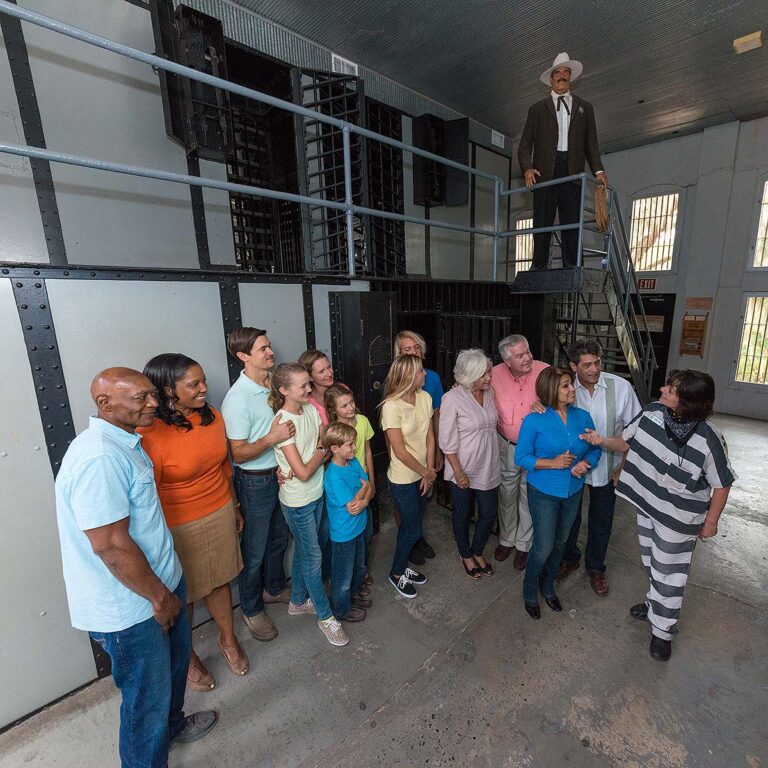
The Old Jail remains one of the best-preserved late 19th-century correctional facilities in the country, offering an immersive look at a past era of criminal justice.
